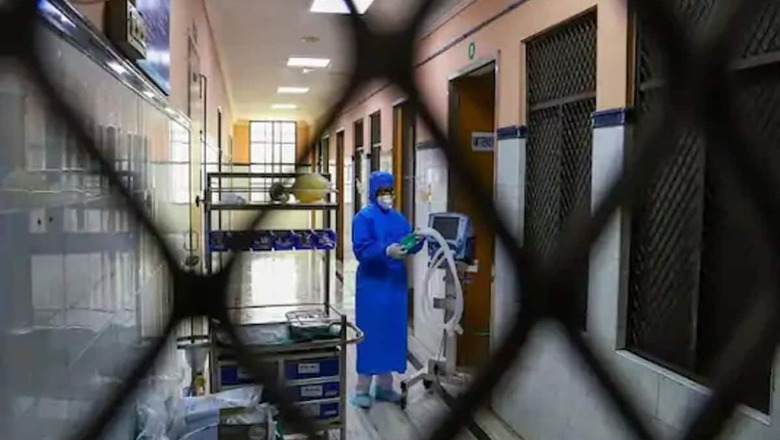
views
As coronavirus cases surge in the national capital, Delhi could be staring at a possible crunch in availability of ICU beds and those with ventilators in both government and private hospitals. Chief Minister Arvind Kejriwal on November 7 had written a letter to Union Health Minister Harsh Vardhan seeking enhancement of 1,092 beds in central government-ruled hospitals, including 300 ICU beds.
In his letter, a copy of which is available with CNN-News18, Kejriwal referred to projections of the Expert Committee under chairperson Dr Vinod Paul in the latter’s Revised Covid Response Strategy 3.0 for Delhi in which the number of cases has been projected to rise to 15,000 per day during the third surge in the upcoming weeks due to various factors like rising pollution, celebration of festivals, wedding season, etc.
Quoting from the expert committee’s report, Kejriwal in the letter said: “The Report III of the Empowered Group 1 that covers the period of September-November 2020 has projected the worst case scenario of roughly 11,909 cases per day in Delhi by end of November, early December 2020, for which a capacity of 20,604 COVID beds is required to be kept ready.”
Kejriwal wrote that Delhi currently has a total bed capacity of 15,713 for treating COVID patients, including ICU and non-ICU beds provided by central government hospitals that had been of of great help in tiding over the first and second surges in June and September. But the shortfall of 4,900 beds, as per the projection of the report, will have to be met by augmentation in both central and state government hospitals apart from leveraging private sector capacities. He added that further augmentation of NIV beds for COVID patients is critical and also key to containing any increase in the mortality.
Observing that a capacity augmentation of 1,092 beds has been proposed by central government hospitals, Kejriwal requested that central government hospitals may be directed to upscale their capacities.
According to the Delhi government’s health bulletin on Tuesday, more than 50% of the 16,234 beds in hospitals were already occupied.
In dedicated COVID health centres, more than half (279) of the 527 beds were occupied. The picture in the dedicated Covid care centres is different where of a total 8,217 beds, 836 were occupied.
The main concern for Delhi government officials is availability of ICU beds and ICU beds with ventilators. While in private hospitals most are reporting that ICU beds are fully occupied, the system is being stretched in government hospitals as well.
The Delhi government’s Corona app that gives real-time data on availability of beds on Tuesday showed that of the 1,270 ICU beds with ventilators, 1,108 are occupied while of the 2,066 ICU beds without ventilators, 1,718 were occupied.
A glance at the occupancy in some of Delhi government hospitals reveals the serious situation when it comes to ICU beds. In GTB Hospital, all 128 ICU beds were occupied; in LNJP, 194 of the of 200 were occupied. In Rajiv Gandhi Super Speciality Hospital, the majority of ICU beds were already occupied, with only 48 of the 200 ICU beds available.
The picture is not very different in central government-run hospitals. In Safdarjung Hospital, 52 of the 54 ICU beds with ventilators were occupied. In AIIMS, 46 of the 50 were occupied.
Delhi on Tuesday reported its highest per day surge in cases with a staggering 7,830 testing positive. The capital also reported the highest casualties in a day, with 83 people succumbing to the disease. The positivity rate stood at a high of 13.26% while the case fatality rate inched towards the 1% mark.
Read all the Latest News, Breaking News and Coronavirus News here




















Comments
0 comment